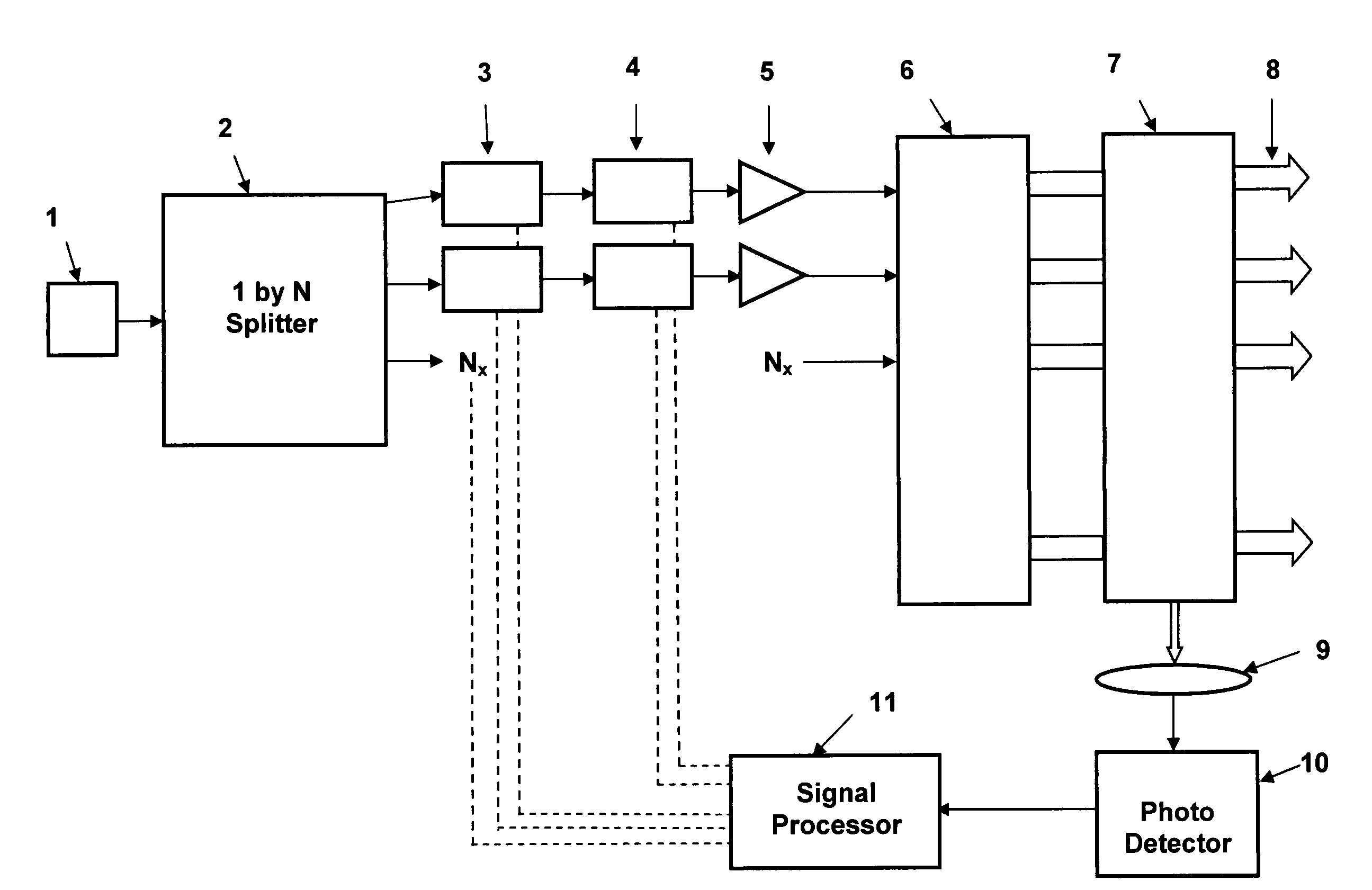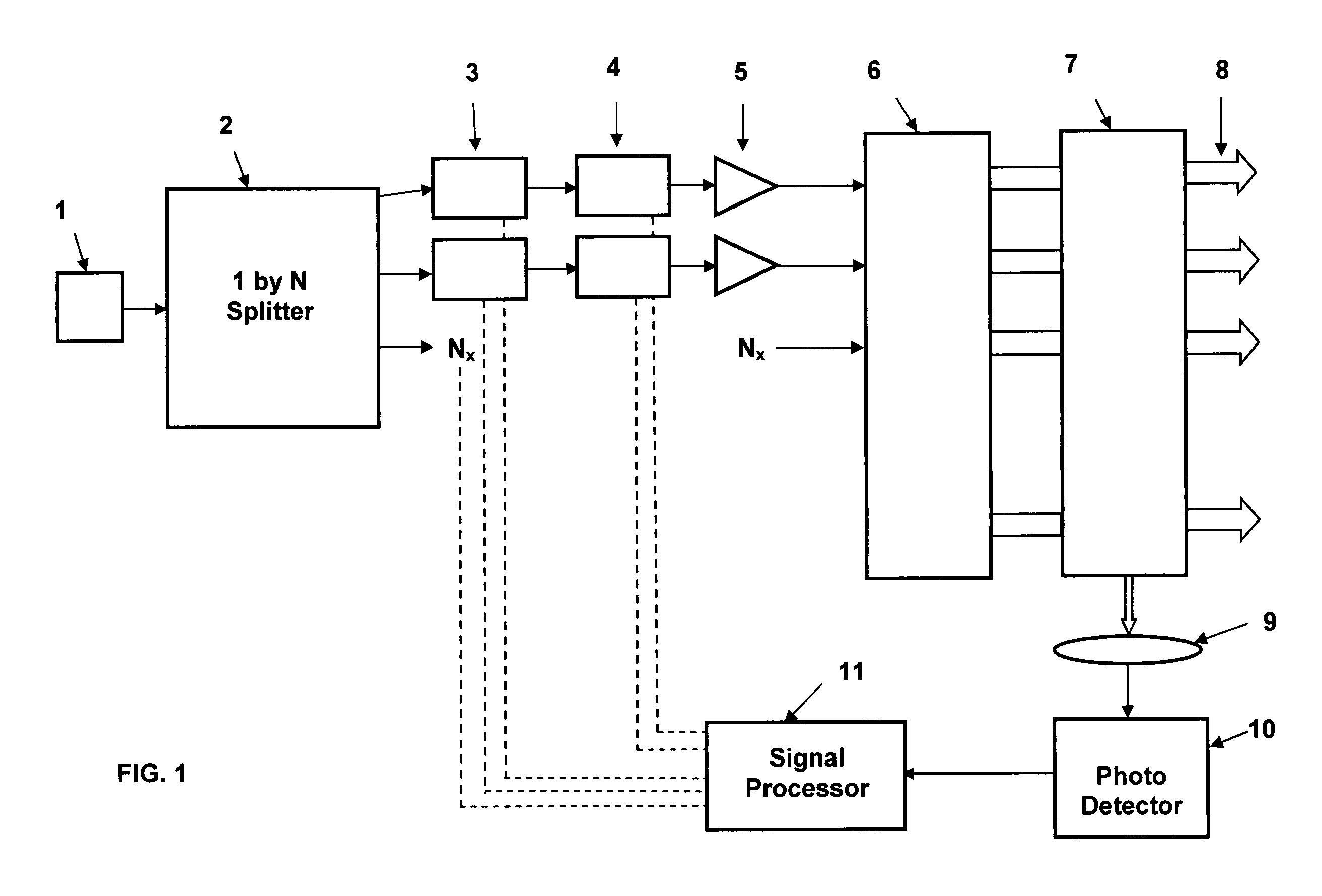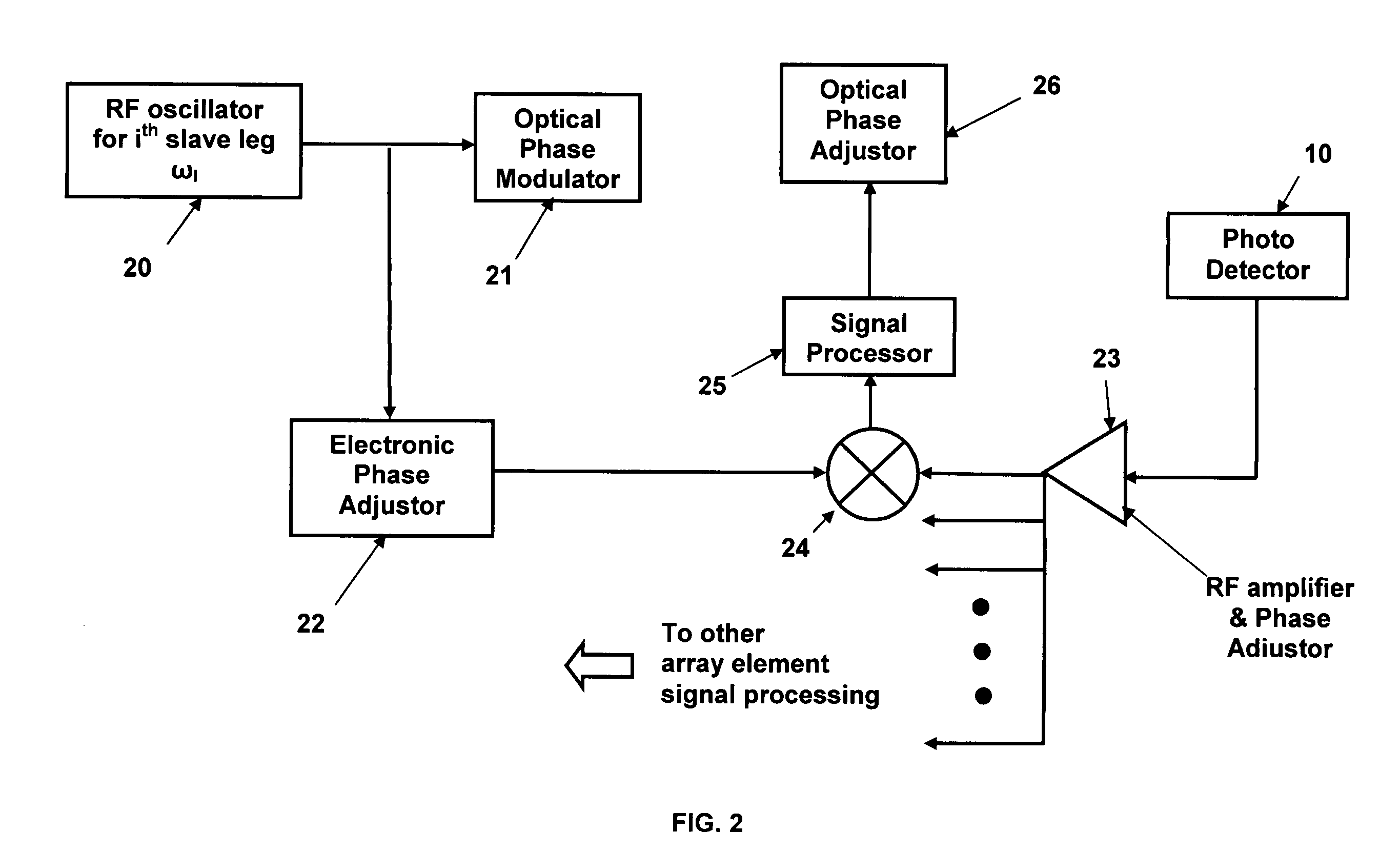Self-synchronous locking of optical coherence by single-detector electronic-frequency tagging
a technology of electronic frequency tagging and self-synchronization, which is applied in the direction of laser optical devices, laser details, electrical equipment, etc., can solve the problems of requiring great care, limiting the power available from a single-mode optical fiber, and a more complex system, so as to maximize the power in the central lobe, the effect of easy scaling
- Summary
- Abstract
- Description
- Claims
- Application Information
AI Technical Summary
Benefits of technology
Problems solved by technology
Method used
Image
Examples
Embodiment Construction
[0011]A novel coherent beam combining system is described that offers not only highly accurate and robust phase locking but is readily scalable to hundreds of elements. Furthermore, this method, called Self-Synchronous LOCSET, provides a simple and robust method that needs only a single detector and has no reference leg. All previous phase locking techniques using a separate reference leg lose phase lock if the reference beam is lost or misaligned. In Self-Synchronous LOCSET there is no reference leg and the array performance degrades gracefully with the loss of any array element. In all of the previous phase locking methods the system fails completely if the reference beam is lost or misaligned. Self-Synchronous LOCSET is not susceptible to this single point failure mechanism.
[0012]A block diagram of an embodiment of the present invention is shown in FIG. 1. The diagram begins with a master oscillator 1. There may or may not be an optical amplifier incorporated in the master oscill...
PUM
 Login to View More
Login to View More Abstract
Description
Claims
Application Information
 Login to View More
Login to View More - R&D
- Intellectual Property
- Life Sciences
- Materials
- Tech Scout
- Unparalleled Data Quality
- Higher Quality Content
- 60% Fewer Hallucinations
Browse by: Latest US Patents, China's latest patents, Technical Efficacy Thesaurus, Application Domain, Technology Topic, Popular Technical Reports.
© 2025 PatSnap. All rights reserved.Legal|Privacy policy|Modern Slavery Act Transparency Statement|Sitemap|About US| Contact US: help@patsnap.com



